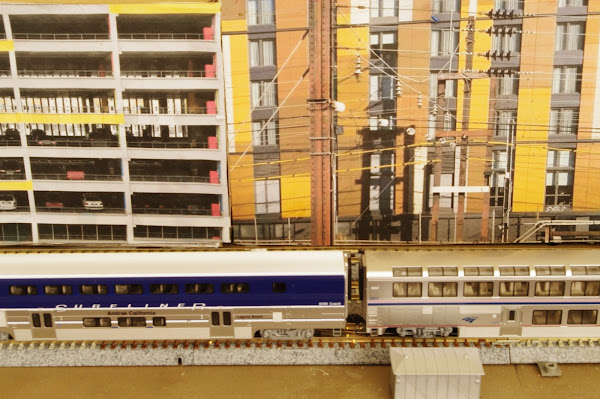I last posted on my project to build some sort of representwtion of the Main Street Station in Richmond, VA on a double-wide, lowered-deck T-TRAK module a little over three years ago. Looking at the dates on my photos, I began the project in 2019, three years before that. The idea has been to build a basic shape of the station from foamcore in N scale -- it's possible to find various dimensioned drawings on the web -- and gradually to add a "skin" of photos printed off the web reduced to N scale. Here is how it started:
It appears that not long after my last post in 2022, I burned out and set the project aside. Here, by the way, is a recent overall photo of the prototype
The station originally served the Chesapeake & Ohio and Seaboard Air Line, buit it sat vacant after Amtrak in 1971. In the 1990s, the city restored it as a wedding and event venue, and it eventually resumed use as an Amtrak station on the line to Newport News, VA. The train shed is now used as a convention hall.
I posted last week that I'm feeling encouraged by recent T-TRAK projects, and I decided to return to the Richmond Main Street module. It turns out that I never laid permanent track on it, so I added permanent double-track Unitrack and wired it to a terminal strip under the deck. The prototype is now single track, but the C&O side was double track in earlier years. Here's the current status with track laid and power hooked up:
The next stage will be to finish the large dormers and chimney, which for now are just cardboard facades. They will need backup pieces and roofs to bulk them up and straighten them out. I'm also scaling and printing more "skin" to add around the side and rear, and I need to add the roof between the headhouse and the train shed.
Some time ago, I heard from a guy who was thinking about doing this in 3D print, but I never heard more. I think doing this in any sort of detailed depth would be close to a lifetime project, and you'd either need to locate the original architectural drawings, digitize them, and translate them to Sketchup, or do some sort of mega scan of the actual building.
What I'm doing is purely to satisfy myself, and it probably won't impress too many other folks, but it will at least turn out to be doable.

















